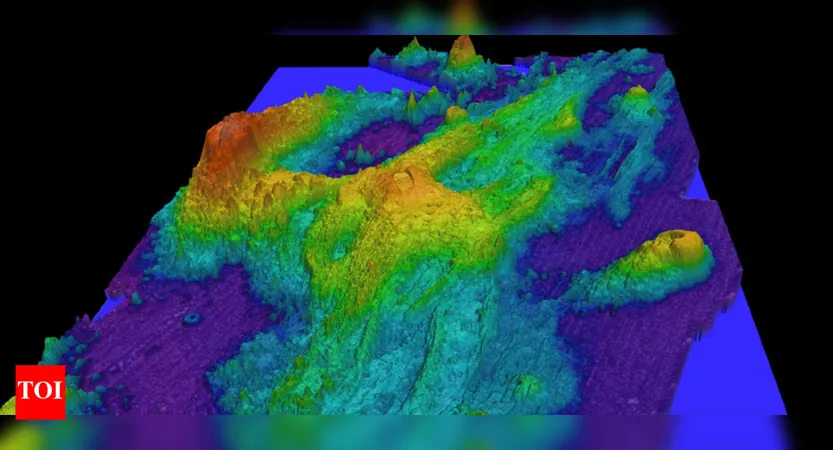
Is the Pacific Ocean About to Blow? 1,000 Daily Tremors Signal Possible Eruption!
2025-08-19
Author: Nur
A Volcanic Awakening Beneath the Waves
Deep in the Pacific Ocean, an underwater volcano, the Axial Seamount, is stirring and showing signs it could erupt as early as 2025. This submarine volcano, located about 300 miles off the coast of Oregon, is being closely monitored by a sophisticated network of scientists who are witnessing the seismic activity rise.
What Makes Axial Seamount Special?
Axial Seamount isn't just any volcano; it's a submarine shield volcano that has erupted multiple times since its last event in 2015. Sitting along the Juan de Fuca Ridge, it’s positioned between two tectonic plates that are pulling apart, creating a unique setting ripe for volcanic activity. With its geologic hotspot origins, scientists are vigilant.
High-Tech Monitoring: A Window to the Deep
The Axial Seamount is one of the most monitored seafloor locations on the planet, thanks to the Ocean Observatories Initiative’s Regional Cabled Array. This extensive undersea network transmits real-time data and stunning visuals via fiber-optic cables directly to researchers. This system has previously provided invaluable insights into past eruptions and the behavior of magma.
Warning Signs: What Scientists Are Observing
Scientists have noted two significant indicators pointing toward a potential eruption. First, the seafloor surrounding Axial has begun to swell—reminiscent of the patterns observed just before its last eruption in 2015. Second, an astounding surge of seismic activity has been recorded, with over 1,000 small tremors occurring each day. These vibrations are believed to be the result of magma accumulating and building pressure beneath the ocean floor.
Will We Face a Tsunami or Earthquake?
Luckily, the Axial Seamount is situated deep underwater, suggesting that there’s minimal risk to the coastal population. Experts reassure us there’s no immediate threat of a tsunami or earthquake resulting from any potential eruption, making it more of a fascinating scientific event than a public safety crisis.
Ecosystem Effects: Nature’s Resilience
While eruptions at Axial certainly disrupt local hydrothermal vent ecosystems, research has shown that life can rebound surprisingly rapidly. Scientists are eager to observe how microbial communities and marine life flourish again after being covered by volcanic material, which could also inform practices related to deep-sea mining.
Stay Tuned for Updates!
The Axial Seamount is not just an earthquake machine but a beacon of learning for scientists around the globe. The potential eruption will offer a rare chance to study volcanic behaviors and deepen our understanding of underwater ecosystems. Keep your eyes on this underwater phenomenon!





 Brasil (PT)
Brasil (PT)
 Canada (EN)
Canada (EN)
 Chile (ES)
Chile (ES)
 Česko (CS)
Česko (CS)
 대한민국 (KO)
대한민국 (KO)
 España (ES)
España (ES)
 France (FR)
France (FR)
 Hong Kong (EN)
Hong Kong (EN)
 Italia (IT)
Italia (IT)
 日本 (JA)
日本 (JA)
 Magyarország (HU)
Magyarország (HU)
 Norge (NO)
Norge (NO)
 Polska (PL)
Polska (PL)
 Schweiz (DE)
Schweiz (DE)
 Singapore (EN)
Singapore (EN)
 Sverige (SV)
Sverige (SV)
 Suomi (FI)
Suomi (FI)
 Türkiye (TR)
Türkiye (TR)
 الإمارات العربية المتحدة (AR)
الإمارات العربية المتحدة (AR)